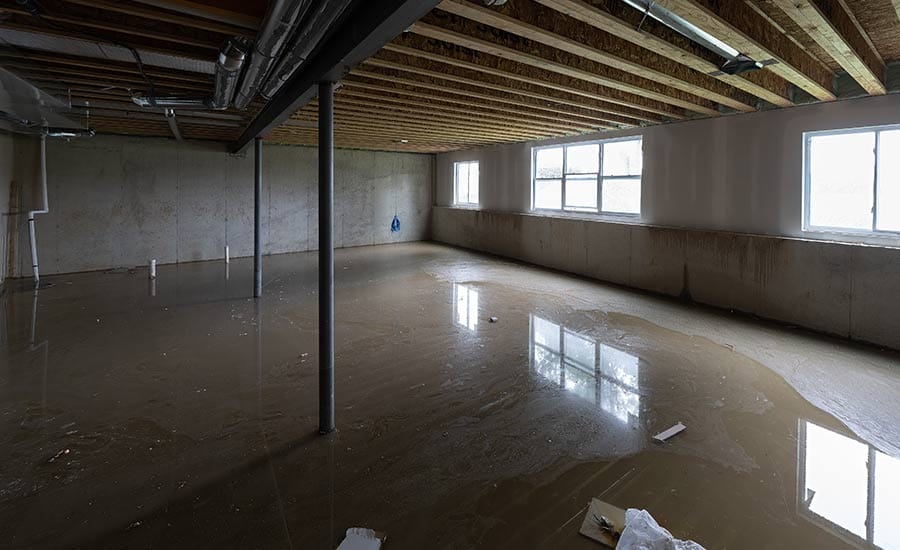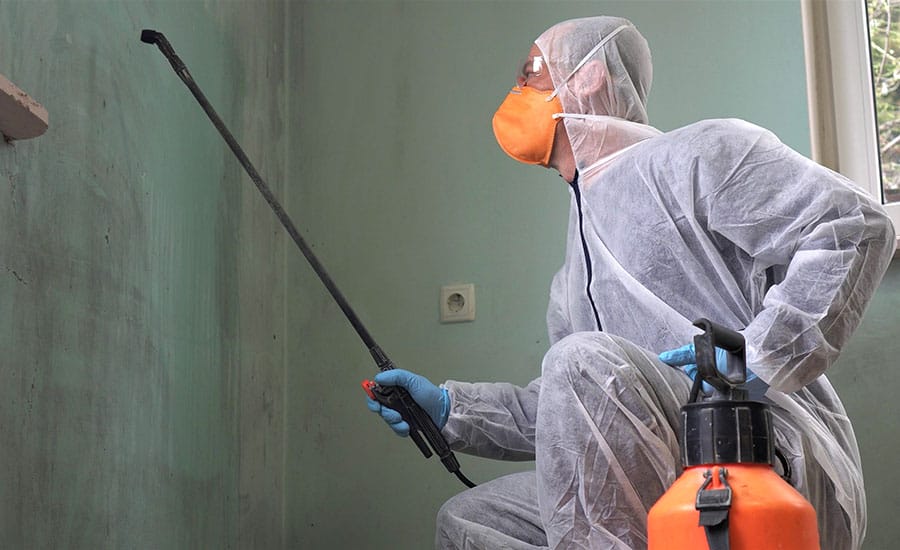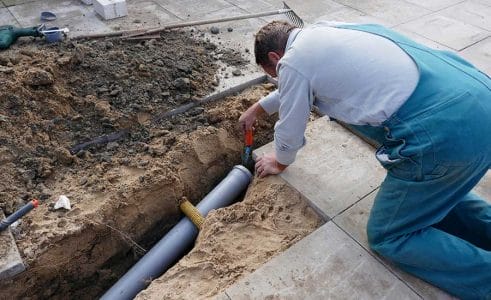Effective Flooded Basement Cleanup and Water Removal
Did you know that water damage impacts 98% of basements in the U.S. during their lifespan?
Whether caused by heavy rain, plumbing failures, or poor drainage, flooding can wreak havoc in minutes.
If left unchecked, it leads to escalating repair costs, structural damage, and potential mold damage.
This guide will walk you through the critical steps to manage basement flooding — from emergency response to preventive strategies — so you can protect what matters most and explore water damage restoration options with BELFOR.
Causes of Basement Flooding and How To Prevent It
Basement flooding can occur for a variety of reasons, often catching homeowners off guard.
The most common causes of basement flooding include:
- Heavy rainfall: Approximately 14.6 million U.S. homes are at risk of flooding as excessive rain can overwhelm drainage systems, leading to water seepage through cracks or foundation walls.
- Poor drainage systems: Blocked or improperly installed gutters and downspouts can direct water toward your home instead of away from it.
- Sump pump failure: A malfunctioning sump pump may fail to remove water, especially during storms or power outages.
- Foundation cracks: Small cracks in your foundation can allow water to infiltrate your basement over time.
- Sewer backups: Blockages or overflows in municipal sewer systems can lead to contaminated water entering your home.
- Groundwater seepage: Rising groundwater levels can push water through basement floors or walls, especially in low-lying areas.
So, if any of these flooding scenarios happen to you, what should you do?
To prevent basement flooding, you should:
- Maintain your gutters and downspouts: Clean debris regularly and make sure downspouts extend several feet away from your foundation.
- Inspect and seal cracks: Regularly check your foundation and basement walls for cracks, sealing them with waterproof materials.
- Install a backup sump pump: Consider a battery-operated or water-powered backup pump to prevent failures during power outages.
- Grade your yard properly: Extend the landscaping slopes away from your home to direct water flow away from the foundation.
- Invest in a backwater valve: This device prevents sewage from backing up into your basement during heavy rainfall.
- Regularly inspect your plumbing: Routine checks can help identify potential issues like leaks or blockages before they escalate.
By staying proactive, you can minimize the risk of basement flooding and protect both your property and peace of mind.
Flooded Basement Cleanup: How To Do It Right
A flooded basement requires immediate and careful attention to minimize damage and restore safety.
By following these steps, you should be safe:
1. Turn Off Electricity and Assess Safety
If it is safe to do so, disconnect electricity to the affected area to prevent electrical shocks.
Avoid stepping into standing water if electrical outlets, cords, or appliances are submerged.
Assess the space for structural damage, exposed wiring, or contaminated water. If the water is from a sewer backup, avoid direct contact and call a professional water removal service immediately.
Tip: Always use a flashlight instead of touching switches in a flooded area. Even a single flip can pose a severe risk if water has reached electrical systems. If unsure, contact a licensed electrician immediately.
2. Stop the Water Source
Identifying and stopping the source of water flooding is important to prevent any extra damage.
First, look for burst pipes, leaking water heaters, or malfunctioning appliances that could be causing the issue.
If heavy rainfall or poor drainage is the reason for the flood, redirect water so it flows away from your home using sandbags or trenches.
For sewer backups or significant water damage, seek professional assistance to address the root cause effectively.
Tip: Turn off your home’s main water valve as a precautionary measure. It’s usually located near where water enters your home. Knowing its location in advance can save precious time during an emergency.
3. Remove Standing Water
Once the area is safe, removing standing water is the next priority to minimize further damage.
For large amounts of water, submersible pumps can quickly and efficiently remove it.
Smaller pools of water can be cleared using a wet/dry vacuum, so you can conduct thorough removal from corners and low-lying areas.
Tip: Make sure water is drained away from your property to prevent it from re-entering your basement.
How To Effectively Do a Flooded Basement Cleanup
Cleaning up a flooded basement requires the right tools, techniques, and attention to detail.
To do an effective flooded basement cleanup, you should:
1. Use Water Extraction Tools
Efficient water removal is the foundation of any flooded basement cleanup.
Act and:
- Quickly remove large volumes of standing water with submersible pumps
- Use wet or dry vacuums for smaller puddles and hard-to-reach areas
- Handle residual water once most has been extracted with mops and buckets
2. Clean and Disinfect Surfaces
Floodwater often carries harmful contaminants, so sanitization is really important.
To prevent health risks, you should:
- Use antimicrobial solutions to clean floors, walls, and other surfaces
- Discard porous materials like carpets, rugs, or insulation that are heavily saturated
- Protect yourself with gloves, masks, and other gear during the process
3. Check for Hidden Water Pockets
Floodwater can seep into unexpected places, so it’s important to inspect parts of the basement that you might not usually check.
To check for hidden water pockets, you should:
- Inspect walls, floors, and insulation for trapped moisture using meters or infrared cameras
- Remove baseboards or drill small holes if necessary to access hidden areas
- Consult a professional if extensive water remains trapped
4. Test Air Quality After Drying
Floods can impact the air in your home and pose a serious health risk.
To test air quality after drying you should:
- Perform air quality tests to check for lingering mold spores or pollutants
- Use air scrubbers or purifiers to clear contaminants and improve indoor air
- Address any odors that may indicate incomplete drying or hidden moisture
5. Remove Moisture With Dehumidifiers
Drying the basement is essential to avoid long-term issues.
To remove moisture, you should:
- Run industrial-grade dehumidifiers and fans to extract moisture
- Improve airflow by opening windows or vents, if conditions allow
- Monitor moisture levels regularly with a hygrometer to check if the area is fully dry

Dealing With Basement Water Damage and Preventing Mold Growth
Water damage can escalate quickly if not addressed properly, leading to structural issues and harmful mold growth.
Here’s what you should do:
Inspect Structural Damage
After water damage, you should:
- Examine walls and flooring: Look for warping, buckling, or discoloration, which could indicate weakened materials.
- Check for cracks: Small cracks in walls or foundations may grow over time, compromising the stability of your home.
- Address hidden damage: Water often seeps into hard-to-reach areas. Use moisture meters or seek professional inspections to detect issues behind walls or under floors.
The Importance of Quick Mold Remediation
Mold can begin growing within 24-48 hours of water damage, making immediate mold removal and remediation necessary.
Here’s what you should do:
- Identify mold early: Look for visible signs like discoloration or a musty odor as mold can grow on walls, ceilings, or even inside vents.
- Hire professionals for remediation: Experts use specialized tools and EPA-approved treatments to safely remove mold and prevent regrowth.
- Prevent spread: Isolate affected areas and thoroughly examine to prevent mold from spreading.
Long-Term Solutions for Water Damage Prevention
Preventing future water damage is key to maintaining a safe and resilient home:
- Improve drainage: Keep gutters and downspouts clear to direct water away from your foundation.
- Seal cracks and leaks: Regularly inspect and repair cracks in your walls, foundation, or plumbing.
- Install a sump pump: A reliable sump pump with a backup power source can prevent basement flooding.
- Control indoor humidity: Use dehumidifiers and check for proper ventilation to reduce moisture buildup.
- Schedule regular Inspections: Professional inspections, including plumbing, roofing, and drainage systems can catch potential issues early.

Why Choose BELFOR for Flooded Basement Cleanup and Restoration
At BELFOR, we understand the urgency and challenges that come with basement flooding.
Our services are designed to restore your home safely, efficiently, and with minimal disruption.
With over 70 years of experience, you can count on us for:
- 24/7 emergency response: Our team is ready to act quickly to prevent further damage, day or night.
- Comprehensive cleanup solutions: From water removal to full restoration, we handle every aspect of the cleanup process.
- Expert technicians: Our trained professionals use advanced tools to restore your basement to its pre-damage condition.
- Health and safety priority: We make sure your home is safe, eliminating contaminants and preventing mold growth.
- Insurance support: We assist with documentation and work directly with your insurance provider to streamline the claims process.
- Preventive recommendations: We offer advice on protecting your basement from future flooding.
At BELFOR, you’re not just restoring your property — you’re restoring peace of mind.
Contact us today to learn how we can help you recover quickly and effectively from basement flooding. We’re here and ready to help!
.jpg)


![Identifying Signs of Water Damage in Walls [Causes + Tips]](https://www.belfor.com/us/wp-content/uploads/sites/2/2024/12/signs-of-water-damage-in-walls-hero-image-491x300.jpg)